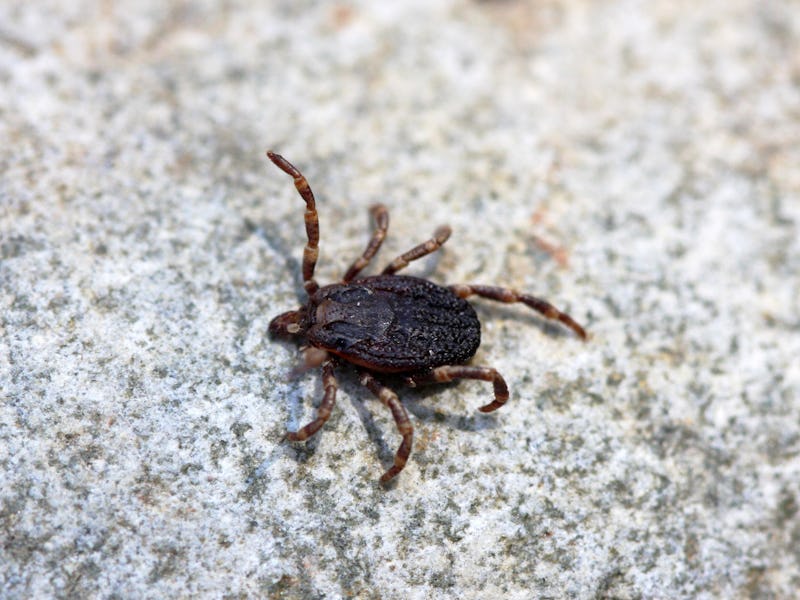Lyme Disease 2018: Symptoms, Tests, Treatments and What You Need to Know
It's on the rise.

With summer just around the corner, more people will start heading outside to enjoy some sun and fresh air. What they won’t enjoy, however, is the increased chance for Lyme disease.
On May 1, the U.S. Centers for Disease Control and Prevention (CDC) published some facts regarding the increase in mosquito, tick, and flea bites. In 2016, there were more than 96,000 disease cases from these bites, which more than tripled the number of cases seen in 2004. Lyme disease cases have tripled in the same time, but the CDC estimated in 2013 that there are approximately 300,000 cases annually, but they don’t come to the attention of state public health agencies to be counted.
The center wants to see state and local agencies step up to fight these diseases. For the average person, being informed about Lyme disease can help with prevention.
Lyme Disease Treatment and Vaccines
Lyme disease is caused by a bacterium in black-legged ticks, or deer ticks, called Borrelia burgdorferi. A regimen of antibiotics over the course of a few weeks can help treat the disease, although some symptoms can last for several months after. In the late Nineties, there was a vaccine available for Lyme disease called LYMErix. It was removed a couple of years later in 2002 due to a panic that the vaccine may cause arthritis, although the link was never confirmed.
Lyme Disease Tests
Blood tests are used to test for Lyme disease. Unfortunately, since the symptoms of the disease are similar to the flu, people infected with the disease may not get diagnosed properly for some time.
Making Lyme disease more complicated, high rates of false-positives further compound the issue of proper diagnosis. According to the National Center for Biotechnology Information, diagnostic mistakes “can deprive patients of treatment specific to the true cause of their symptoms, and can result in prolonged therapy for a condition they do not have.”
A erythema migrans rash.
What Lyme Disease Rash Looks Like
A rash can form around the area of the tick bite from one day to a month after. Known as the erythema migrans, the rash creates a bulls-eye pattern around the bite to approximately two to three inches. About 80 to 90 percent of cases will cause a rash to appear on the skin.
Lyme Disease Symptoms and When They Appear
Along with the rash, other Lime disease symptoms include fever, headache, fatigue, swollen lymph nodes, and muscle and joint aches. These symptoms can occur within 30 days of the tick bite. Symptoms escalate without treatment and affect the body’s nervous system. This can cause severe headaches, arthritis with severe joint pain particularly around the knees, facial palsy, problems with short-term memory, and shooting pains and numbness in the hands or feet.
How Is Lyme Disease Transmitted
Blacklegged ticks carry the bacteria that cause the disease and are found mainly in the northeastern, mid-Atlantic, and north-central United States. Nymphs, or immature ticks, are the most common culprit and also harder to see since they’re smaller in size than normal ticks. They’re often found in the groin, armpits, or scalp, and it takes 36 to 48 hours for the ticks to transmit the bacterium once its attached.
How to Avoid Lyme Disease
To prevent getting bitten by a deer tick, the CDC recommends avoid wooded and bushy areas with high grass, wear long sleeve shirts and pants, and to use repellent on skin, clothing, and gear if you’re out in areas where ticks are more prevalent. When a person is out in the wilderness, they should shower when they get home and do a full-body check for areas where ticks may attach. Removing a tick right away will lower the chance of exposure to Lyme disease dramatically. It also helps to check out any gear used or pets for any ticks. If you start displaying symptoms after spending time outside in areas with high grass, make sure to let your doctor know where you’ve been when getting checked.